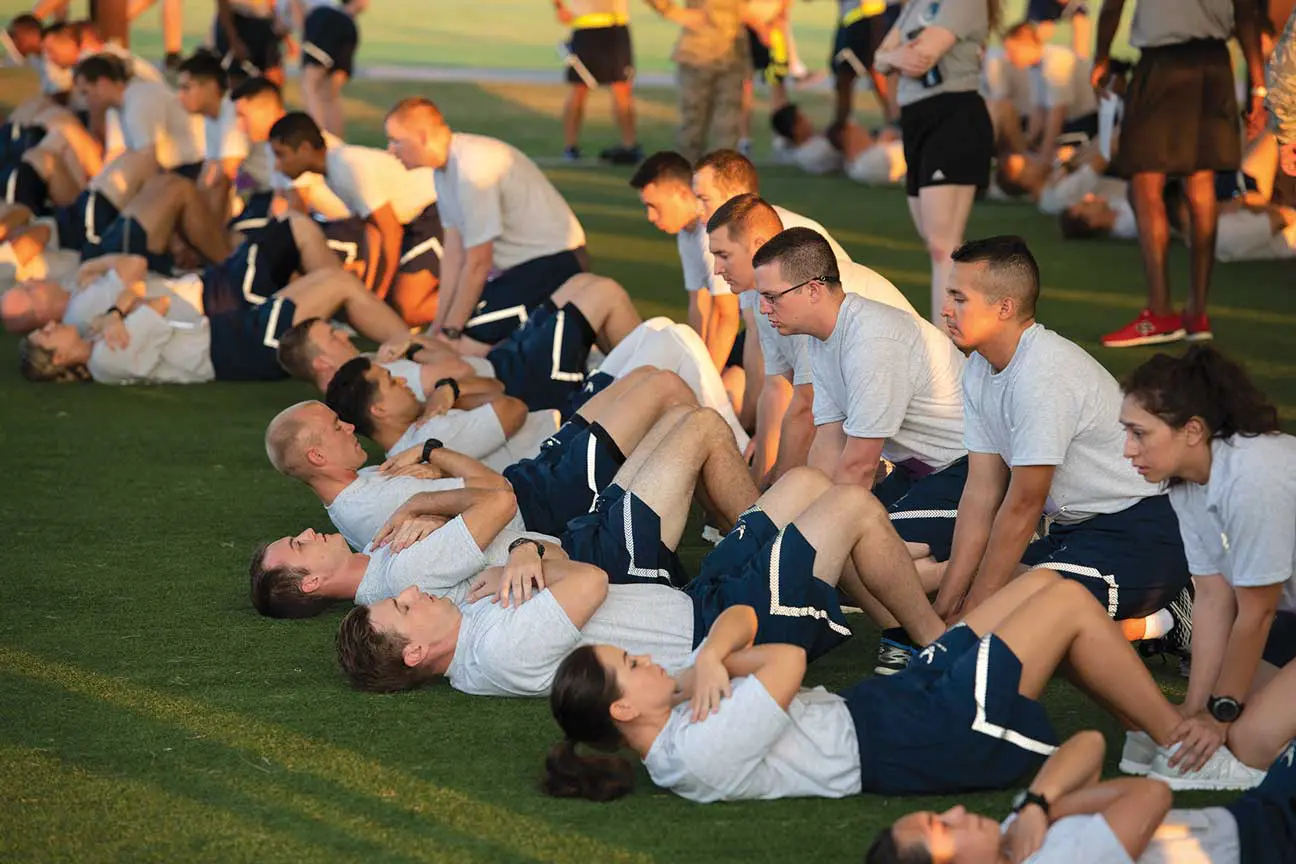How To Pass Your Physical Fitness Test with Flying Colors
By MS. KATHY ALWARD, STAFF WRITER
The physical fitness assessment for the U.S. Air Force was updated in 2022 after close to 20 years. Endurance is tested with the Air Force’s Basic Military Training (BMT) physical fitness test (PFT), which measures cardiorespiratory fitness, physical strengths, and abilities. In order to graduate from boot camp and then continue to the advanced individual training, you are required to pass the BMT PFT.
The Air Force advises that you should work on your physical conditioning before you report for BMT. It is important to keep in mind that different body types may have different needs when getting in shape. You should review your current fitness activities and lifestyle habits, and also start a food diary to examine whether or not you have healthy dietary habits.
After your self-review, you should inform your doctor of your plans to join the military. Share with your doctor which branch of military service you plan to join and when you want to ship out and learn what kind of changes you should make in order to survive basic training and have good overall health. The timing of your doctor’s appointment is important because it is recommended that you start your physical training program to prepare for basic training at least 6 weeks to 2 months before the BMT onsite training. The more time you have to prepare, the better.
There are several important changes this year as well, including the permanent removal of the body composition waist measurement component from the test, as well as age groups now being broken into 5-year groups rather than the previous 10-year age groups.
And although the new PFT still includes situps, pushups, and a 1.5-mile run, Airmen can now substitute other test options, such as planks, reverse crunches, a timed shuttle run, and hand-release pushups.
There are three main groups in which Airmen must participate, choosing one activity from each of the three groups: core strength, upper body strength, and running. When Airmen complete their Fitness Screening Questionnaire, they must determine which test component they will complete, choosing either situps, planks, or cross-legged reverse crunches for the core strength test; standard pushups or hand-release pushups for the upper body strength test; and a 20-meter high aerobic multi-shuttle run or a 1.5-mile run for the running test.
Evidence-based training tips can help Airmen who want to succeed with their PFT. High-intensity interval training (HIIT) has been proven consistently to improve distance running speed. Speed is important in the 1.5-mile run. HIIT training includes alternating between a very high-intensity sprint and a low-intensity sprint with equal or longer duration intervals. This type of training is different from traditional cardio training because unique adaptations at the cellular level are produced. Distance running is one of the sports in which athletic performance is improved with HIIT.
Run times can also be greatly improved by losing excess body fat weight. Extra body weight can slow down a run, and you can prove this to yourself by running on a treadmill by first carrying a 15-pound weight in each hand. Test your run time when you are carrying a 15-pound weight in each hand versus your run time when you are not carrying a 15-pound weight in each hand. You will find that you run slower with the extra 15-pound weights, so imagine how much faster you will run if you lose excess body fat weight.
A workout known as “10-20-30†training has also proven to be an effective HIIT. For 30 seconds, start out with some low-intensity cardio—such as running, swimming, or biking. Then increase to a moderate-intensity level for 20 seconds. Then sprint for 10 seconds, giving it everything you’ve got. Repeat this sequence five times and then rest for 2 minutes. Next, repeat this sequence five more times and cool down for 2 minutes to complete the training.
Resistance training is also an effective form of exercise used to improve your PFT score. Resistance training is a type of training that uses an opposing force—such as resistance bands or dumbbells—when exercising your muscles. Other examples of resistance training include weight machines with adjustable seats and handles that are either attached to hydraulics or weights; medicine or weighted balls; and squats, pushups, Pilates, Barre, and chinups using your own body weight for resistance training.
Resistance training has benefits other than helping you pass your PFT, including increased stamina; reduced risk of osteoporosis due to increased bone density and strength; the opportunity to remain independent as you age due to the maintenance of balance, stability, and flexibility; improved muscle strength; increased muscle-to-fat ratio; reduced (and sometimes prevented) cognitive decline; decreased injury risk; improved sleep; and increased self-confidence with an improved body image, energy level, and mood.
Strength training is a type of training that also requires the use of resistance to increase muscle size and strength. A structured training program is often used for strength training to provide a stimulus to the body that requires an adaptation response. To achieve this, a professional strength and conditioning coach often designs the training program.
Joining the Air Force can change your life, but no matter what changes occur, it all starts with training. Training is where you officially become an Airman and learn to develop the physical strengths, skills, and values needed to succeed in the Air Force.

